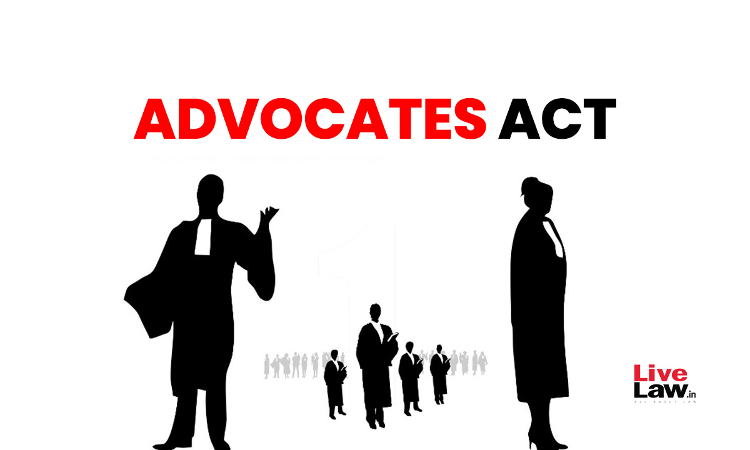Rethinking Marketing For Lawyers In Modern India
Ebad Ur Rahman
24 Jan 2023 9:00 AM IST

Lawyers enrolled in India are not permitted to market their work. It is prohibited by the Bar Council of India Rules[1] as well as the Advocates Act, 1961[2]. This ban originated in Victorian England and has remained till date. Its basis lies in Indian social construct of ethics and morals which requires abstaining from promotion of work, an aspect that used to resonate with the UK of yore. Further, the legal profession is thought of as a noble pursuit with justice as its goal and any attempts at permitting advertising are thought of as vulgarizing it.
The hurdles in India today with respect to permitting marketing for lawyers have become ancient relics in jurisdictions that the profession seeks its inspiration from. Solicitors and Barristers in the UK are permitted to publicize their practice and services under the Legal Services Regulation Act, 2015, which house the (Advertising) Regulations, 2020. These Regulations cover print, audio and visual advertisements, including online advertisements. Lawyers in the European Union have the Council of Bars and Law Societies of Europe (CCBE) Code, 2006, wherein they are allowed to ‘notify the public’[3] of their services subject to authenticity and primary ethics of the profession.
Hence, what we see around us is a development of the profession in light of the basic structure of ethics and morality. However, we do not feel the Indian jurisdiction’s intention to move in that direction yet. This can be attributed to various notions of old school thought wherein the quality and results delivered by a professional were said to be advertisements of their proficiency. It is undoubtedly the reputation of authenticity of one’s skill that serves best in the marathon of life. But, a closed setup as in the existing manner ends up creating an imbalance with respect to those established in the industry and those who may be newcomers, i.e. without ancestral support, which is not usually the case in the legal profession in India.
A good chunk of lawyers in today use various mediums of indirect marketing. Some of them include answering legal queries via digests, newspapers or websites, social media posts especially on Instagram and LinkedIn – focusing on what to do, what not to do, repeating and highlighting parts of a speech, making videos or video logs regarding various incidents or, relaying lessons from every inch, nook and corner of something or the other. The monotony of these mediums is rendering them to cringe. Although the reliance on social media has surely given birth to the legal influencer, all of it is in the garb of marketing oneself indirectly.
It is an open secret that law firms with greater economic freedom use conferences, ratings and rankings, sponsorships, social media posts, workshops and seminars for indirectly marketing themselves. Large entities in the legal domain have a lot to do with numerous awards given out for various best categories. Once such an award is received, it is paraded as an achievement of sorts on every platform. If viewed through the lens of nobility, such behavior can be termed as a blot on the face of the profession. Such actions tend to push smaller entities and lawyers with lesser financial resources farther away from the public eye. Further, this offers some food for thought on the role of competition in the legal field, especially when there is an absence of adequate regulation that is supposed to create a level playing field.
Put simply, lawyers provide clients with services. The legal services market as we know it today, has evolved considerably over the last few decades. Transactional work may be at an unprecedented peak. The demand for alternate modes of Dispute Resolution has never been higher. Developments seen today in domains of Aviation, Maritime, Sports and Technology Law have never been heard of in the past. Therefore, it becomes a necessity to adapt while holding onto ethics and morals of the profession. Inspiration in this regard can be taken from the Florida Bar’s Handbook on Lawyer Advertising and Solicitation. This Handbook lays down a comprehensive structure for marketing and advertising for lawyers while also providing a heavy system of compliances for the state of Florida. It provides for application of the Advertising Rules, guidelines on use of social media, rejecting endorsements by celebrities, rules on envelopes, letterheads and business cards, and a review mechanism of advertisements among other aspects. For an insight into the process of permitting advertisements, an advertisement has to be filed with the Florida Bar for a review at least 20 days prior to its publication. The Florida Bar’s website also has a FAQ page regarding their Advertising Rules for easy access and understanding. It is said that Florida is also the toughest state for lawyers to advertise in.
Summing up, we need to take a leap of faith. It took a COVID-19 pandemic for the profession to adopt extensive use of technology. Chat GPT is beginning to send tremors across the industry. In this scenario, permitting marketing and advertising will be a boon for lawyers in India. It will also create a thin line of legality, level the playing field and prevent usage of dubious means due to the absence of law.
Views are personal.


